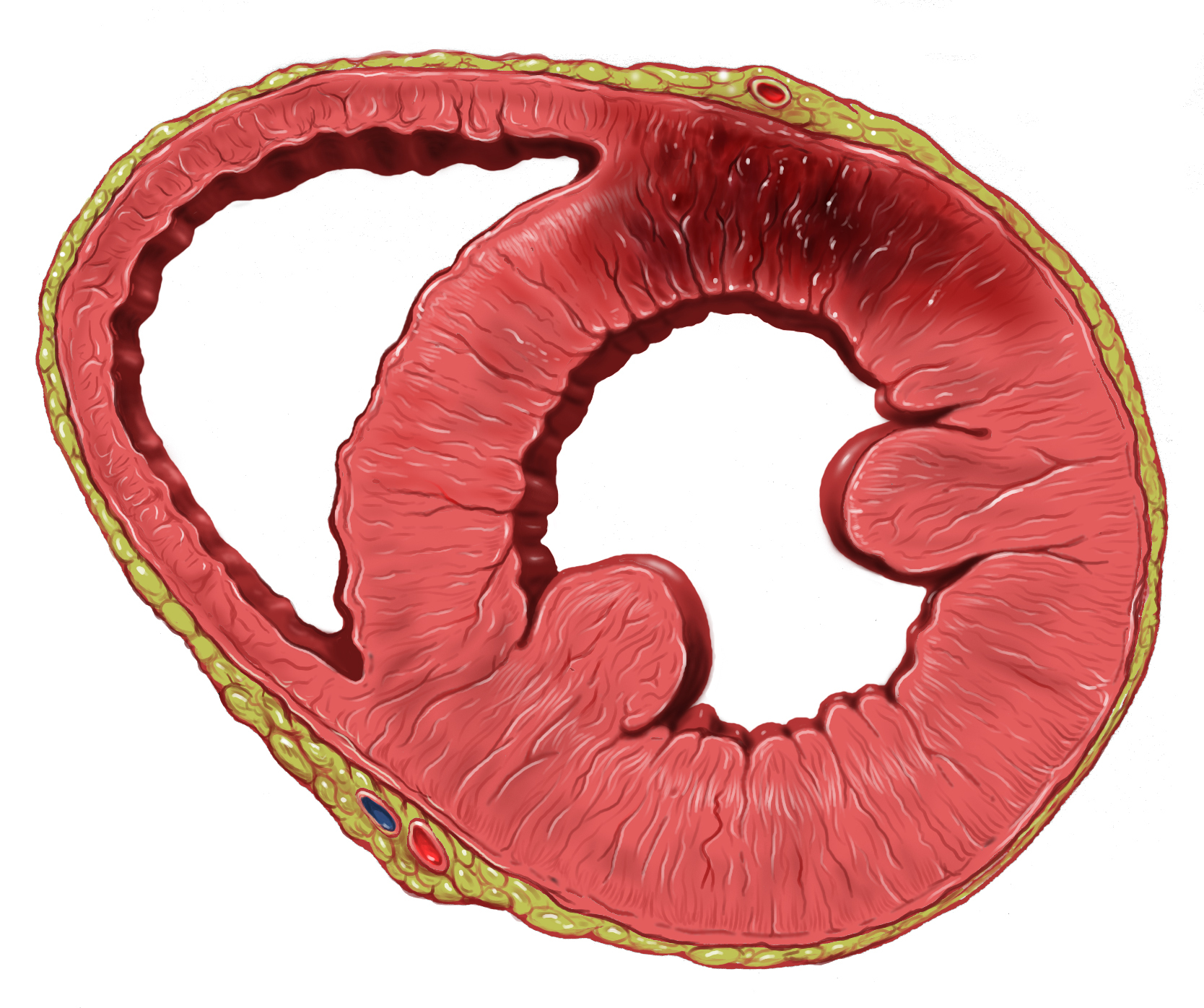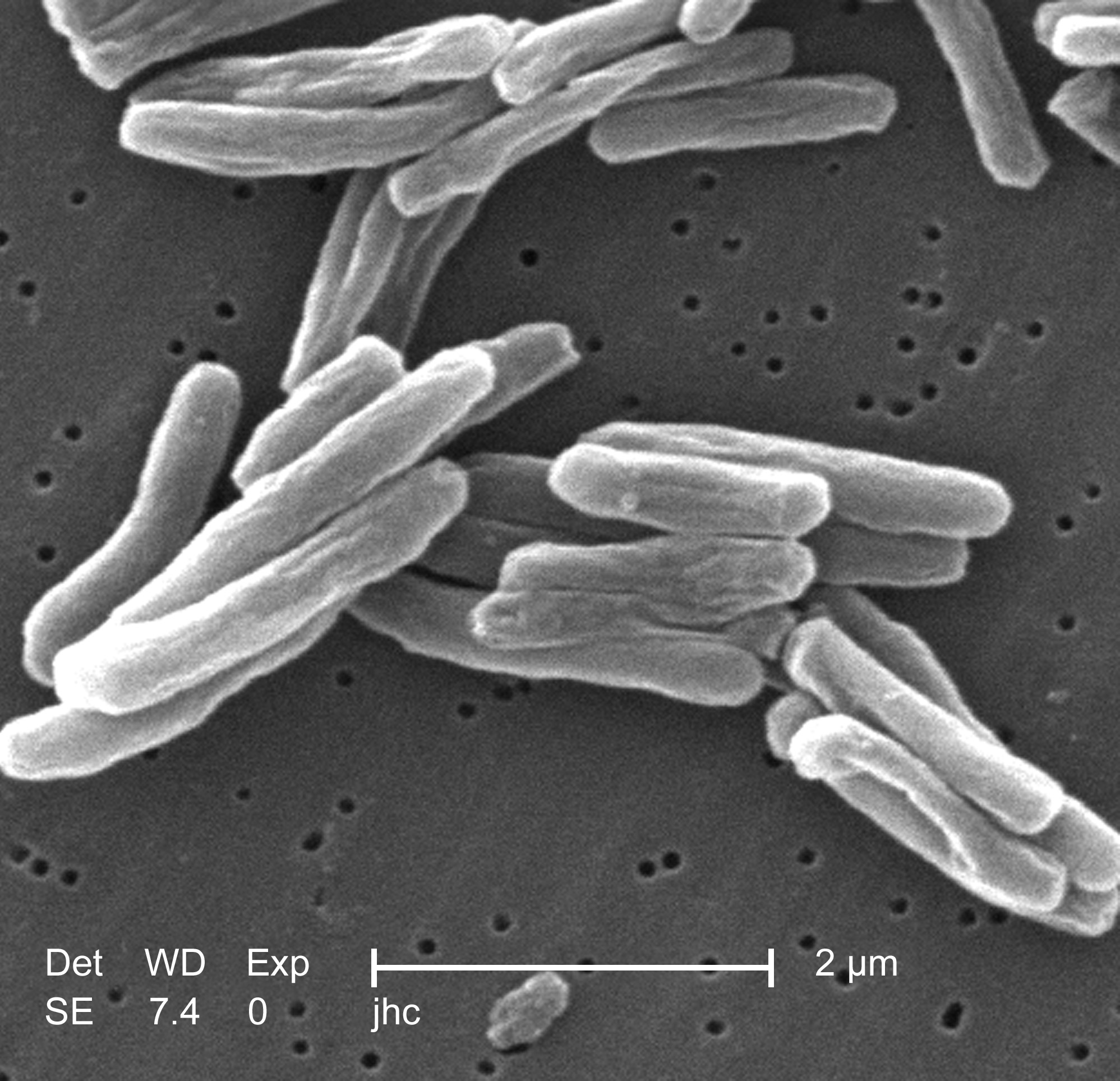|
Contraction Band Necrosis
Contraction band necrosis is a type of uncontrolled cell death (necrosis) unique to cardiac myocytes and thought to arise in Reperfusion injury, reperfusion from hypercontraction, which results in sarcolemmal rupture. It is a characteristic histologic finding of a Timeline of myocardial infarction pathology, recent myocardial infarction (heart attack) that was partially reperfused. The name of the histopathology, histopathologic finding comes from the appearance under the microscope; contraction bands are thick intensely eosinophilic staining bands (typically 4-5 micrometres wide) that span the short axis of the myocyte. They can be thought of extra thick striae, typical of cardiac muscle and striated muscle. Pathophysiology Contraction band necrosis is thought to arise by two mechanisms: #a calcium-dependent mechanism - activation of the contractile machinery of the cell via its usual mechanism, calcium, which is in excess due to ischemia. #a calcium-independent mechanism, as se ... [...More Info...] [...Related Items...] OR: [Wikipedia] [Google] [Baidu] |
Striated Muscle
Striations means a series of ridges, furrows or linear marks, and is used in several ways: * Glacial striation * Striation (fatigue), in material * Striation (geology), a ''striation'' as a result of a geological fault * Striation Valley, in Antarctica * In hyperbolic geometry, a ''striation'' is a reflection across two parallel mirrors. * In anatomy, striated muscle * Striations can be found in certain glasses. These have been caused by turbulent flow during teeming (pouring) of the glass. * Striations can be observed in clouds. See Barber's pole A barber's pole is a type of sign used by barbers to signify the place or shop where they perform their craft. The trade sign is, by a tradition dating back to the Middle Ages, a staff or pole with a helix of colored stripes (often red and w .... * Ballistic fingerprinting {{disambiguation ... [...More Info...] [...Related Items...] OR: [Wikipedia] [Google] [Baidu] |
Myocardial Infarction
A myocardial infarction (MI), commonly known as a heart attack, occurs when blood flow decreases or stops to the coronary artery of the heart, causing damage to the heart muscle. The most common symptom is chest pain or discomfort which may travel into the shoulder, arm, back, neck or jaw. Often it occurs in the center or left side of the chest and lasts for more than a few minutes. The discomfort may occasionally feel like heartburn. Other symptoms may include shortness of breath, nausea, feeling faint, a cold sweat or feeling tired. About 30% of people have atypical symptoms. Women more often present without chest pain and instead have neck pain, arm pain or feel tired. Among those over 75 years old, about 5% have had an MI with little or no history of symptoms. An MI may cause heart failure, an irregular heartbeat, cardiogenic shock or cardiac arrest. Most MIs occur due to coronary artery disease. Risk factors include high blood pressure, smoking, diabetes, l ... [...More Info...] [...Related Items...] OR: [Wikipedia] [Google] [Baidu] |
Phosphotungstic Acid Haematoxylin
Phosphotungstic acid haematoxylin (PTAH) is a mix of haematoxylin with phosphotungstic acid, used in histology for staining. It stains some tissue in contrasting colors in a way similar to haematoxylin and eosin stain, as phosphotungstic acid binds to tissue proteins. It is used to show gliosis in the central nervous system, tumours of skeletal muscles, and fibrin deposits in lesions. Muscle is stained blue-black to dark brown, connective tissue is pale orange-pink to brownish red, fibrin and neuroglia stain deep blue, coarse elastic fibers show as purple, and bone and cartilage obtain yellowish to brownish red color. PTAH is ideal for demonstrating striated muscle fibers and mitochondria, often without a counterstain. As such, it is used to identify contraction bands, as seen in contraction band necrosis. PTAH stains ependymomas while it does not stain choroid plexus papillomas, providing one means of differentiating these tumors. This technique has been largely replaced ... [...More Info...] [...Related Items...] OR: [Wikipedia] [Google] [Baidu] |
H&E Stain
Hematoxylin and eosin stain ( or haematoxylin and eosin stain or hematoxylin-eosin stain; often abbreviated as H&E stain or HE stain) is one of the principal tissue stains used in histology. It is the most widely used stain in medical diagnosis and is often the gold standard. For example, when a pathologist looks at a biopsy of a suspected cancer, the histological section is likely to be stained with H&E. H&E is the combination of two histological stains: hematoxylin and eosin. The hematoxylin stains cell nuclei a purplish blue, and eosin stains the extracellular matrix and cytoplasm pink, with other structures taking on different shades, hues, and combinations of these colors. Hence a pathologist can easily differentiate between the nuclear and cytoplasmic parts of a cell, and additionally, the overall patterns of coloration from the stain show the general layout and distribution of cells and provides a general overview of a tissue sample's structure. Thus, pattern recogn ... [...More Info...] [...Related Items...] OR: [Wikipedia] [Google] [Baidu] |
Cardiovascular Disease
Cardiovascular disease (CVD) is a class of diseases that involve the heart or blood vessels. CVD includes coronary artery diseases (CAD) such as angina and myocardial infarction (commonly known as a heart attack). Other CVDs include stroke, heart failure, hypertensive heart disease, rheumatic heart disease, cardiomyopathy, abnormal heart rhythms, congenital heart disease, valvular heart disease, carditis, aortic aneurysms, peripheral artery disease, thromboembolic disease, and venous thrombosis. The underlying mechanisms vary depending on the disease. It is estimated that dietary risk factors are associated with 53% of CVD deaths. Coronary artery disease, stroke, and peripheral artery disease involve atherosclerosis. This may be caused by high blood pressure, smoking, diabetes mellitus, lack of exercise, obesity, high blood cholesterol, poor diet, excessive alcohol consumption, and poor sleep, among other things. High blood pressure is estimated to account ... [...More Info...] [...Related Items...] OR: [Wikipedia] [Google] [Baidu] |
Mortality Rate
Mortality rate, or death rate, is a measure of the number of deaths (in general, or due to a specific cause) in a particular population, scaled to the size of that population, per unit of time. Mortality rate is typically expressed in units of deaths per 1,000 individuals per year; thus, a mortality rate of 9.5 (out of 1,000) in a population of 1,000 would mean 9.5 deaths per year in that entire population, or 0.95% out of the total. It is distinct from " morbidity", which is either the prevalence or incidence of a disease, and also from the incidence rate (the number of newly appearing cases of the disease per unit of time). An important specific mortality rate measure is the crude death rate, which looks at mortality from all causes in a given time interval for a given population. , for instance, the CIA estimates that the crude death rate globally will be 7.7 deaths per 1,000 people in a population per year. In a generic form, mortality rates can be seen as calculated using ... [...More Info...] [...Related Items...] OR: [Wikipedia] [Google] [Baidu] |
Morbidity
A disease is a particular abnormal condition that negatively affects the structure or function of all or part of an organism, and that is not immediately due to any external injury. Diseases are often known to be medical conditions that are associated with specific signs and symptoms. A disease may be caused by external factors such as pathogens or by internal dysfunctions. For example, internal dysfunctions of the immune system can produce a variety of different diseases, including various forms of immunodeficiency, hypersensitivity, allergies and autoimmune disorders. In humans, ''disease'' is often used more broadly to refer to any condition that causes pain, dysfunction, distress, social problems, or death to the person affected, or similar problems for those in contact with the person. In this broader sense, it sometimes includes injuries, disabilities, disorders, syndromes, infections, isolated symptoms, deviant behaviors, and atypical variations of structure ... [...More Info...] [...Related Items...] OR: [Wikipedia] [Google] [Baidu] |
Animal Studies
Animal studies is a recently recognised field in which animals are studied in a variety of cross-disciplinary ways. Scholars who engage in animal studies may be formally trained in a number of diverse fields, including geography, art history, anthropology, biology, film studies, geography, history, psychology, literary studies, museology, philosophy, communication, and sociology. They engage with questions about notions of "animality," "animalization," or "becoming animal," to understand human-made representations of and cultural ideas about "the animal" and what it is to be human by employing various theoretical perspectives. Using these perspectives, those who engage in animal studies seek to understand both human-animal relations now and in the past as defined by our knowledge of them. Because the field is still developing, scholars and others have some freedom to define their own criteria about what issues may structure the field. History As an interdisciplinary subject, anim ... [...More Info...] [...Related Items...] OR: [Wikipedia] [Google] [Baidu] |
Rigor Mortis
Rigor mortis (Latin: ''rigor'' "stiffness", and ''mortis'' "of death"), or postmortem rigidity, is the third stage of death. It is one of the recognizable signs of death, characterized by stiffening of the limbs of the corpse caused by chemical changes in the muscles postmortem (mainly calcium).Saladin, K. S. 2010. ''Anatomy & Physiology'': 6th edition. McGraw-Hill. In humans, rigor mortis can occur as soon as four hours after death. Contrary to folklore and common belief, rigor mortis is not permanent and begins to pass within hours of onset. Typically, it lasts no longer than eight hours at "room temperature". Physiology After death, aerobic respiration in an organism ceases, depleting the source of oxygen used in the making of adenosine triphosphate (ATP). ATP is required to cause separation of the actin-myosin cross-bridges during relaxation of muscle.Hall, John E., and Arthur C. Guyton. Guyton and Hall Textbook of Medical Physiology. Philadelphia, PA: Saunders/Els ... [...More Info...] [...Related Items...] OR: [Wikipedia] [Google] [Baidu] |
Ischemia
Ischemia or ischaemia is a restriction in blood supply to any tissue, muscle group, or organ of the body, causing a shortage of oxygen that is needed for cellular metabolism (to keep tissue alive). Ischemia is generally caused by problems with blood vessels, with resultant damage to or dysfunction of tissue i.e. hypoxia and microvascular dysfunction. It also implies local hypoxia in a part of a body resulting from constriction (such as vasoconstriction, thrombosis, or embolism). Ischemia causes not only insufficiency of oxygen, but also reduced availability of nutrients and inadequate removal of metabolic wastes. Ischemia can be partial (poor perfusion) or total blockage. The inadequate delivery of oxygenated blood to the organs must be resolved either by treating the cause of the inadequate delivery or reducing the oxygen demand of the system that needs it. For example, patients with myocardial ischemia have a decreased blood flow to the heart and are prescribed wit ... [...More Info...] [...Related Items...] OR: [Wikipedia] [Google] [Baidu] |
Calcium
Calcium is a chemical element with the symbol Ca and atomic number 20. As an alkaline earth metal, calcium is a reactive metal that forms a dark oxide-nitride layer when exposed to air. Its physical and chemical properties are most similar to its heavier homologues strontium and barium. It is the fifth most abundant element in Earth's crust, and the third most abundant metal, after iron and aluminium. The most common calcium compound on Earth is calcium carbonate, found in limestone and the fossilised remnants of early sea life; gypsum, anhydrite, fluorite, and apatite are also sources of calcium. The name derives from Latin ''calx'' " lime", which was obtained from heating limestone. Some calcium compounds were known to the ancients, though their chemistry was unknown until the seventeenth century. Pure calcium was isolated in 1808 via electrolysis of its oxide by Humphry Davy, who named the element. Calcium compounds are widely used in many industries: in foods and p ... [...More Info...] [...Related Items...] OR: [Wikipedia] [Google] [Baidu] |




.png)

